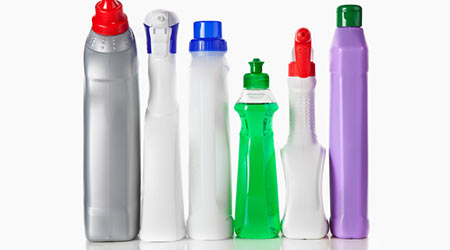
Disinfecting is vital to public health. It greatly reduces the spread of illness related to Listeria, E. coli, MRSA and more. The process protects both your customers’ health and your organization’s reputation.
As important as disinfecting is, the required chemicals are surprisingly expensive. The Center for Food Security and Public Health estimates that a quaternary disinfectant (quat) “that costs $68.00 per gallon of concentrate will cost $0.27 per diluted gallon (0.5 ounce concentrate per gallon of water).” This means, according to the report, disinfecting a 500-square- foot room with a quat costs $1.35.
While that sounds like a little, costs add up quickly considering that in 2014, the median elementary school in the US was 84,700 square feet, and the average office building constructed between 2000-2012 is 19,000 square feet (Department of Energy, Commercial Buildings Energy Consumption Survey).
It also assumes a lot about your custodial staff. If they are not diluting the chemicals precisely they’re wasting money without meeting health goals. If they don’t follow proper protocols, like cleaning before they disinfect and letting the solution dwell, they’re wasting time and resources, while not letting the products work.
There is a better, less costly way to disinfect public spaces. On-site generated ElectroChemically Activated (ECA) cleaning solutions remove pathogens effectively for a fraction of the cost of conventional disinfectants. Produced using softened tap water, salt and electricity, ready-to- use ECA takes mixing chemicals out of the equation – while reducing the need for bottling and shipping products – leading to less waste, better performance, and a smaller carbon foot print.
It’s also versatile. In healthcare settings, ECA pulls double duty, suitable as, “both a novel environmental decontaminant and a topical treatment agent,” according to a study published in the May 2012 issue of the European Journal of Clinical Microbiology and Infectious Diseases.
The same goes for food service applications. Custodial crews can disinfect surfaces with ECA solutions while prep chefs can disinfect fresh cut vegetables – per the Journal of Food Science, “Electrolyzed Water as a Disinfectant for Fresh- cut Vegetables” – to reduce foodborne pathogens.
The hospitality sector is uniquely positioned to benefit from an ECA system.
Travelers want clean, hygienic rooms. News of a dangerous illness can cause them to cancel plans outright, no matter how clean a room looks, according to the 2015 report, “Hotel cleanliness: will guests pay for enhanced disinfection?” in the International Journal of Contemporary Hospitality Management. However, the same study also finds that guests may pay, “a premium for guest rooms that are cleaned using enhanced disinfection techniques.”
This is made easier as some ECA systems produce EPA-Registered disinfectants that work with very short dwell times and without rinsing on hard surfaces; while being very economical.
Systems can be installed under rental programs to keep costs low and technology current, avoiding equipment obsolescence.
“It’s gratifying to know ECA technology has been well-vetted across diverse industries, and an effective and affordable disinfectant is now available to the professional cleaning sector using a renewable technology,” said Laura Louis, PathoSans.

 The Down and Dirty on Cleaning in Virus Season
The Down and Dirty on Cleaning in Virus Season How Surfactant Use is Expanding in Commercial Cleaning
How Surfactant Use is Expanding in Commercial Cleaning Operational Excellence Series 2025: Better Budgeting
Operational Excellence Series 2025: Better Budgeting